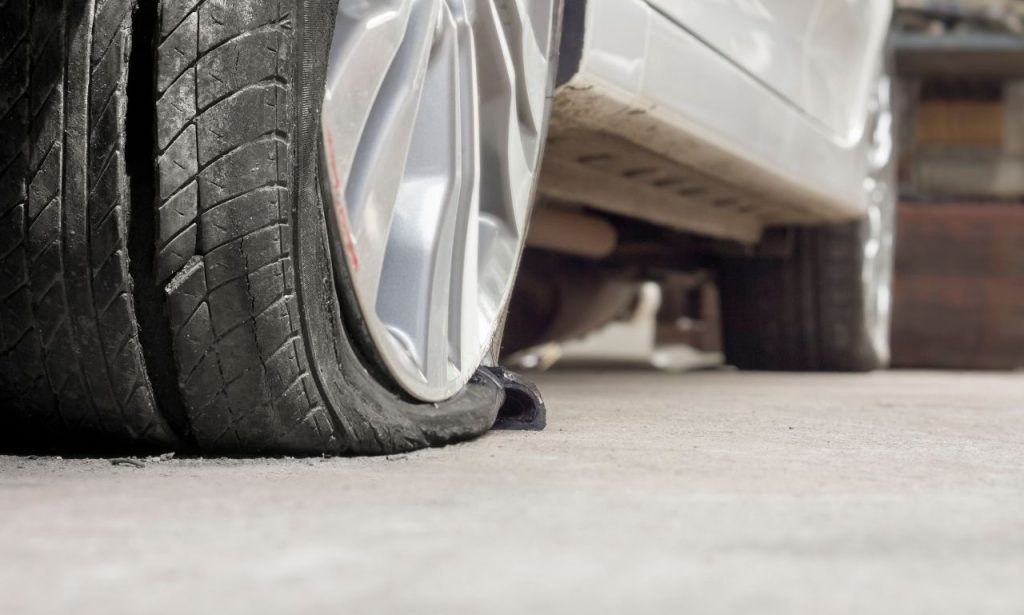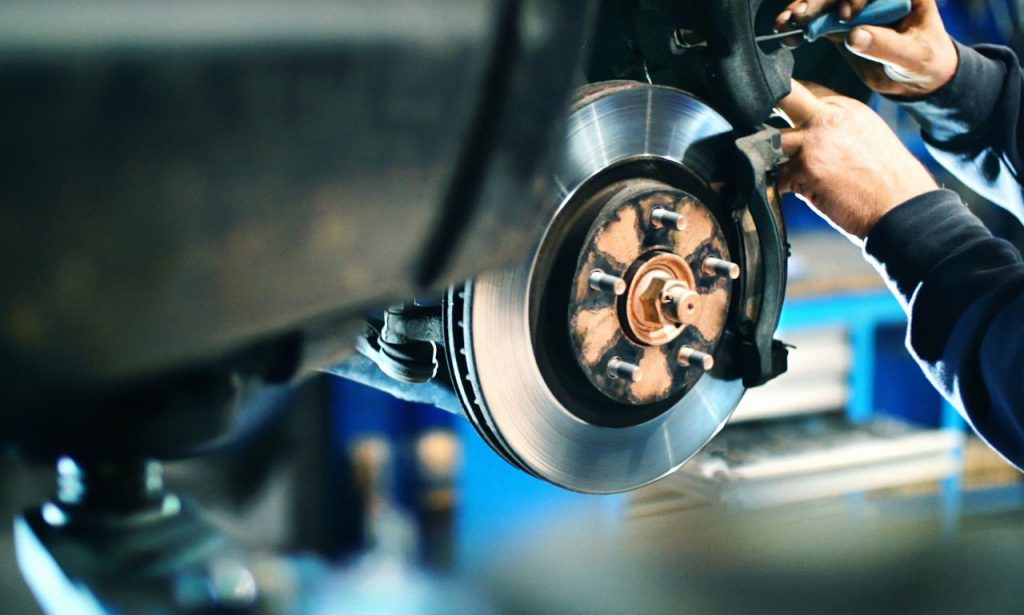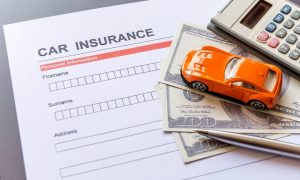A tire blowout is one of those driving nightmares that no one sees coming. You’re cruising down the highway, music on, maybe sipping your coffee, and then—BAM!—suddenly the car jerks violently, and your heart leaps into your throat. If you’ve never experienced it, count yourself lucky. For those who have, you know the mix of fear, adrenaline, and confusion that hits in that moment.
Here’s the reality: tire blowouts are more common than you might think. According to the National Highway Traffic Safety Administration (NHTSA), tire-related crashes cause about 11,000 accidents every year in the U.S. alone. That’s not a small number, and many of them could be prevented or handled better if drivers knew what to do. The truth is, most drivers panic, and panic makes things worse.
That’s why understanding how to handle a tire blowout could mean the difference between a scary incident and a life-threatening crash. In this article, I’ll walk you through each step, explain why it matters, and give you real-world tips that could save your life—or someone else’s.
Keep a Firm Grip on the Steering Wheel
When a tire blows, the first thing you’ll feel is a violent pull to one side. The steering wheel will suddenly resist your movements, as if the car has a mind of its own. This is where many drivers lose control, either because they let go slightly in shock or overcorrect.
The golden rule is simple: hold the steering wheel firmly with both hands. You need that control to counter the uneven pull from the blown tire. NASCAR drivers grip the wheel hard when they hit a slick patch or blow a tire at 180 mph. While you’re not on a racetrack, the principle is the same—control begins with your grip.
Think of your steering wheel like the reins of a horse. If the horse suddenly bolts to the left, letting go or yanking too hard won’t fix the problem. Steady, strong hands give you balance and authority. That’s precisely what you need in those first few critical seconds.
Resist the Urge to Slam the Brakes

Our instincts betray us in emergencies. Something goes wrong, and the knee-jerk reaction is to stomp on the brakes. With a tire blowout, that’s the worst thing you can do.
Slamming the brakes shifts weight to the front wheels, destabilizing the already shaky vehicle. If it’s a rear tire that blows, braking hard can cause your car to spin out of control. If it’s a front tire, the sudden stop could cause the steering to lock and send you careening across lanes.
Instead, you need to fight that urge. Keep your foot steady, ease off the gas, and let the car’s momentum carry forward. Think of it like calming a skittish animal—gentle, not forceful. Brakes come later, but not yet.
Maintain Vehicle Control and Steer Into the Pull
Here’s something many drivers don’t expect: when a tire blows, your car will pull firmly toward the damaged side. The natural reflex is to yank the wheel back the other way. Unfortunately, that can cause you to swerve across the road.
The more brilliant move is controlled steering. Steer gradually in the same direction as the pull while keeping the vehicle aligned with your lane. This helps stabilize the car and reduces the chance of fishtailing. Once you’ve achieved stability, you can begin guiding the car toward a safe stopping point.
Picture this: if your right-front tire blows, the car pulls to the right. By steering gently right and holding firm, you keep the vehicle balanced. Fighting it with a sharp left tug only creates chaos. Smooth adjustments win the day here.
Gradually Reduce Speed and Drift to Safety
Once you’ve steadied the wheel, the next priority is slowing down—but not abruptly. Take your foot off the accelerator and let the car coast to a natural stop. As the momentum fades, you’ll have more control.
This isn’t the time for drama. Don’t yank the wheel toward the shoulder or stomp the brakes. Just ease your way over when traffic allows, constantly checking mirrors and blind spots. Your goal is to drift, not dart.
Think of it as guiding a ship back to port. Quick, jerky moves risk a collision. A calm, measured approach helps you safely avoid traffic’s path.
Activating Hazard Lights as You Slow
Communication on the road is everything. When your tire blows, other drivers may not immediately understand why your car is wobbling or slowing down. That’s where hazard lights become your best friend.
Flip them on as soon as you start drifting toward safety. It’s a signal to everyone behind you: something’s wrong, give me space. Most drivers are quick to respond when they see those flashing reds.
Without hazards, a trailing driver might assume you’re just distracted or braking for no reason. That confusion increases the risk of getting rear-ended. Don’t wait—hit those hazards early.
Secure Your Position
Once you’ve pulled off, it’s not enough to just stop. Where you park matters an excellent deal for your safety. Choose a flat, stable spot away from traffic. Shoulders on highways can be dangerous with cars flying by at 70 mph, so aim for an exit ramp or wider breakdown lane when you can.
Shift the car into park, engage the parking brake, and keep your hazards flashing. If you have reflective triangles or flares, this is the time to place them behind your vehicle—especially at night.
Think of this step as setting up camp. You’re creating a safe zone until help arrives or you deal with the tire yourself.
Assess the Damage (From a Safe Distance)
It’s tempting to jump out and inspect the carnage right away, but safety first. Step out only when you’re sure traffic isn’t a threat. Move to the side of the vehicle that’s away from the flow of cars.
Once safe, check the blown tire visually. Sometimes the tread peels off like a banana; other times, it’s just shredded rubber. Knowing the extent of the damage helps you decide whether a spare part will suffice or if you need professional help.
If the rim looks bent or suspension parts are damaged, don’t risk driving further. Even with a spare, you could worsen the problem. That’s why assessment is key—it informs your next move.
Calling for Roadside Assistance

Not everyone carries a jack and spare tire, and honestly, not everyone should attempt a roadside change. If you’re unsure or the conditions aren’t safe, call for help.
Roadside assistance programs, like AAA or services included with your insurance, are designed for precisely this scenario. A tow truck or service vehicle can either replace the tire or tow you to a safe location.
If you don’t have a membership, local towing companies are just a Google search away. Yes, it costs money, but it’s cheaper than risking your life on the side of a busy freeway.
Waiting Safely for Help to Arrive
Once you’ve called for help, the waiting game begins. The key here is patience and positioning. Stay inside the vehicle if traffic is heavy, with your seatbelt fastened. Outside, you’re a pedestrian at risk.
If you do exit, move far away from the road—think grassy embankment, not shoulder. Distracted drivers often veer into breakdown lanes without noticing. Too many tragedies happen this way, and it’s not worth the gamble.
Pass the time by calling a friend, checking messages, or simply taking a breath. You made it safely through the blowout; now the priority is staying safe until help arrives.
Conclusion
A tire blowout is scary, but it doesn’t have to end in disaster. By keeping a firm grip on the steering wheel, resisting the urge to brake, steering with control, and slowing gradually, you drastically improve your chances of coming out unharmed. Add in hazard lights, clever positioning, and a calm call for help, and you’ve handled it like a pro.
Remember, tires are your only point of contact with the road. Checking air pressure, rotating regularly, and replacing worn-out tires are your best defenses against a blowout in the first place. Prevention saves far more stress than reaction ever could.
So, next time you hit the road, ask yourself: if a tire blew right now, would I know exactly what to do? If you’ve read this far, the answer should be yes. And that confidence could save your life one day.
FAQs
Tire blowouts usually result from underinflation, overloading, or hitting sharp objects. Heat buildup from long drives in hot weather can also play a role.
Technically, yes—but only for a very short distance and at low speeds. Driving on a blown tire risks rim damage and loss of control.
Warning signs include bulges, cracks, uneven tread wear, or vibrations while driving. Regular inspections reduce the risk.
If you’re confident, have the right tools, and traffic conditions are safe, you can. Otherwise, roadside assistance is safer.
Most “donut” spares are limited to 50–55 mph. Check your vehicle’s manual for specific recommendations.





